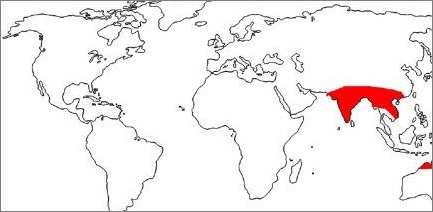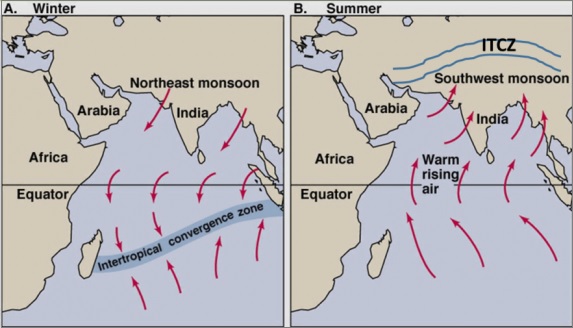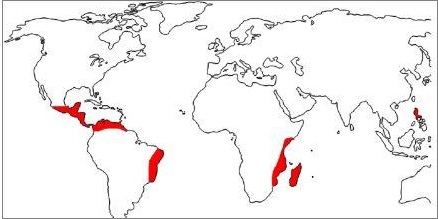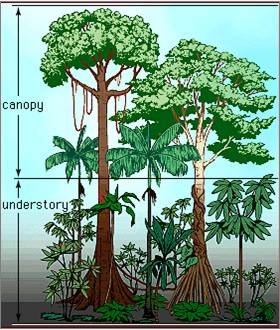Tropical Monsoon Climate and Tropical Maritime Climate
by Devender
0 2052
The tropical monsoon climate is also known as tropical wet climate and trade-wind littoral climate.
Tropical Monsoon Climate
This type of climate is marked by wind direction's seasonal reversal which gives proper wet & dry seasons. This happens because of the difference in the specific heat capacity of the land and the sea. It is basically found beyond the equatorial region between 10 and 25 Degree and North & South of the equator and is best developed in the following countries –
- India
- Myanmar
- Thailand
- Laos
- Vietnam
- Bangladesh
- South China
- Northern Australia
- The central Asia region has Himalayan ranges, so it gets heated intensely creating a region of low pressure
- The seas remain comparatively cool as they warm much slower
- The southern hemisphere faces winter at the same time
- In the continental interior of Australia, a region of high pressure is set up
- The winds blow outward as southeast monsoon to Java
- After crossing the equator, these winds are attracted towards the continental low-pressure area
- They reach the Indian subcontinent as Southwest monsoon
- A similar reversal in wind directions takes place in other parts of the world that experience the monsoon climate
- This climate has a high mean annual temperature
- It has a small annual temperature just like the equatorial climate
- Seasons of Tropical Monsoon Climate:
- The average temp range is between 19 Degree C and 23 Degree C
- A region of high pressure is developed over Punjab
- In the colder north, frost occurs at night
- The temperature rises sharply and the average temperature is around 35 Degree C
- The sun shifts northward to the Tropic of Cancer
- There is no rain in this season
- An intense low pressure generates over N-W India
- The S-W monsoon bursts in mid-June bringing torrential downpours all across the country
- This rainy season is of approximately 4 Months
- Around 95 % of the total annual rainfall happens in this season
- The skies become clear again and cool
- The dry season returns in October with the N-E monsoon
- Central America
- West Indies
- N-E Australia
- Philippines
- Parts of East Africa
- Madagascar
- Eastern Brazil
- Guinea Coast
- The wetter season experiences higher temperatures
- The drier season experiences lower temperatures
- This climate is favorable for habitation because of the steady influence of the trades
- However, it is more prone to severe tropical cyclones, hurricanes, and typhoons
- However, these forests are more open, less luxuriant, and have fewer species
- The forest has 3 layers of trees that are – Canopy, Understory, and Shrub layer
- The average height is around 25 to 45 m
- The average rainfall is from 100 to 200 cm
- Therefore, Teak is used for shipbuilding, furniture, and other construction purposes
- Burma has 3/4th of the world's Teak production
- Agricultural Development in the Monsoon lands:
- Sugar cane - Grown in India, Java, Cuba, Jamaica, Formosa, Trinidad, and Barbados
- Jute - Grown in Ganga Brahmaputra delta in India and Bangladesh
- Manila Hemp/Abaca - Grown in the Philippines (It is used for making high-quality ropes)
- Coffee
- Tea
- Shifting Cultivation:
- The first crop might be great but after that, the quality drops
- It is widely practiced among people of various countries
- These people have given shifting cultivation local names as follows:
The rainfall in this climate is abundant just like the tropical forest climate but it is concentrated in the high-sun season. This climate has warm temperatures throughout the year as it is located very near to the equator. The landmasses of the Northern hemisphere get heated in the summer when the sun is overhead at the Tropic of cancer.
The conditions are reversed in winter when the sun is overhead at the Tropic of Capricorn. The Central Asia region gets extremely cold and creates a region of high pressure. So, the winds start blowing out as North-East monsoon. After crossing the equator, these winds get drawn towards the low-pressure center in Australia. They arrive in North Australia as northwest monsoon.

1 Cool, Dry Season (Oct to Feb):
In the northern Indian subcontinent, there is little or no rain that is brought by the out blowing dry winds or the Northeastern monsoon. However, Punjab receives a small number of rainfalls that are received from cyclonic sources. This rainfall is very important for the survival of winter cereals.
The N-E Monsoon brings rain to the southern part of India as it acquires moisture when it blows over the Bay of Bengal. Chennai receives around 125 cm of rainfall between October and November that is around half of its annual rainfall.
2 Hot Dry season (March to Mid-June):
3 Rainy season (Mid-June to September):
A characteristic feature of tropical monsoon climate is this pattern of concentrated heavy rainfall in the summers.

4 The retreating monsoon:
Towards the end of the rainy season, the frequency and amount of rainfall decrease. After September, it starts retreating southwards until it leaves the continent. The withdrawal of monsoon is firstly noticed in Punjab which receives the S-W monsoon earliest.
Tropical Marine Climate
The eastern coasts of the tropical lands experience this kind of climate. They receive steady rainfall from the trade winds which amounts to 120 - 200 cm annually. The areas include –

The rainfall in these regions is both orographic and convectional. It is orographic in eastern Brazil where moist trade winds meet the upland masses. It is convectional because of intense heating during the daytime in summers. The tendency of rainfall is maximum in the summers but there are no distinct dry periods. The annual temperature range for the regions experiencing this climate is often quite small and they have a hot & humid temperature throughout the year.
Tropical Monsoon Forests
The amount of summer rainfall dictates the natural vegetation of tropical monsoon lands. The trees of this region are normally deciduous because of the dry period. During the dry period, the trees shed their leaves to withstand the drought. The ecosystems developed in the tropical monsoon forests are very similar to the true rainforests in the equatorial climate.

Most of these forests yield very valuable timber. They are also known for their durable hardwood such as teak, rosewood, sal, sandalwood, shisham, Banyan, Aracia, and some other varieties of Eucalyptus in North Australia.
Bamboo thickets are also present together with the forests. They often grow to great heights and have thorny scrubs with scattered trees & long grasses. Among the hardwoods, Teak poses high durability, strength, immunity to shrinkage, fungus, and insects.
1 Major Food crops:
Rice, Wheat, Millets, Sorghum, Gram, Maize, and Beans are the major food crops of these lands among which rice is the most important one. Beans are grown in areas where rice cannot be grown.
2 Lowland Cash Crops:
Indigo, Cotton, Banana, Coconut, and Spices are among other lowland cash crops.
3 Highland Plantation crops:
It was originated from Ethiopia & Arabia and still grown there. However, Brazil accounts for half of the coffee production around the world. It is also grown in the highland slopes of India, Eastern Java, and Central American states.
Tea originated from China and it is still an important crop for local consumption. India, Java, Bangladesh, and Sri Lanka are the major exporters of Tea.
The shifting cultivation is practised in tropical monsoon forests only for subsistence i.e. for consumption. Sweet potato, beans, maize, paddy, yams, and tapioca are the major crops. The soils of tropical regions are mainly latosolic, they have high iron and aluminium oxide content. Therefore, these soils are prone to rapid leaching away and easily exhausting.
| Local Name | Country |
| Ladang | Malaysia |
| Taungya | Burma |
| Tamrai | Thailand |
| Caingin | Philippines |
| Humah | Java |
| Chena | Sri Lanka |
| Milpa | Africa and Central America |

Share:







Comments
Waiting for your comments